It’s a mid-winter night in Toowoomba, raining and cold. I step outside and my bare foot squishes something cold — cold, but very much alive.
Oh no! I’ve trodden on a favourite invertebrate, one of a host of unusual creatures that come out to play in the suburbs at night. It’s a Red Triangle Slug — creator of the strange rows of circular marks covering fences and trees throughout town. It’s a wonderful wet night, perfect for them to rampage about the backyard.
These colourful native animals are one of approximately 1,500 species of land snails and slugs found across eastern Australia, a number that includes both native and introduced species. Most of the slugs and snails found throughout the gardens of towns such as this one are introduced, as native species have not coped well with the changes that urbanisation have brought to their original habitat. Red Triangle slugs, however, are an exception — survivors and adaptors, turning up all over the place.
What type of creature are these Red Triangle Slugs, named for the … well, red triangle … on their backs? They are “terrestrial pulmonate gastropod molluscs from the family Athoracorphoridae”, the leaf-veined slugs.
Molluscs are soft-bodied invertebrates that usually have a shell for protection from human toes and other problems. They have a ventral foot for locomotion and, in aquatic species, gills for respiration. Their digestive and reproductive tissues are located together to form a visceral mass inside their bodies. An extensive fold of tissue, known as a mantle, covers them and is a protective sleeve for the head and gills. In snails it produces the shell. In the Triangle Slugs, it is reduced to the red-bordered patch on their backs.
Slugs and snails belong to the class of molluscs known as gastropods, which includes marine, freshwater and land snails (mostly with coiled shells) and slugs (without shells).
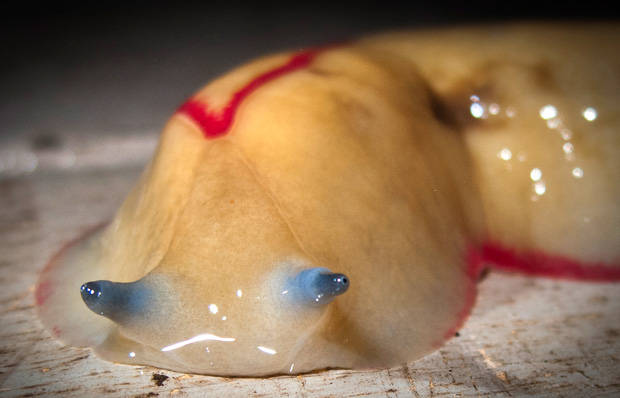
The eyes have it. Simple eyes, on tentacles. Optical tentacles, if you like. Slugs can only ‘see’ light and dark, and the eyes are not able to focus. Photo R. Ashdown.
Growing to a length of 14 cm, the Red Triangle Slug is One of Australia’s largest native slugs. Found in coastal forests (and some towns) from around Wollongong New South Wales north to Mossman in northern Queensland, they graze on the microscopic algae that grow on tree bark, footpaths, posts and fences, among other things. Naturalist Martyn Robinson discovered that if given the chance these slugs will also remove bathroom mould!
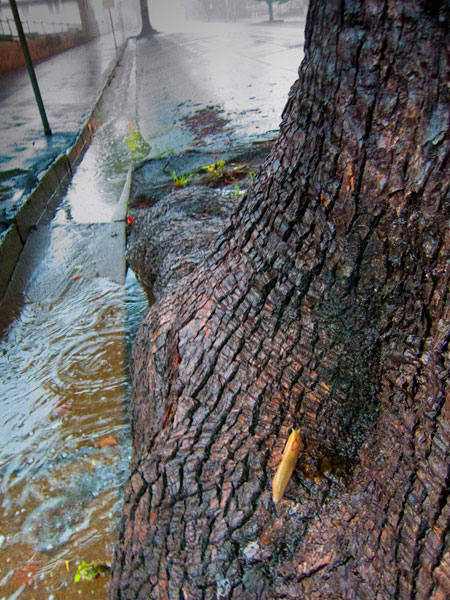
Late afternoon on a dark, wet day. A Triangle Slug roams a Camphor Laurel next to the Clive Berghoffer Stadium. Photo R. Ashdown.
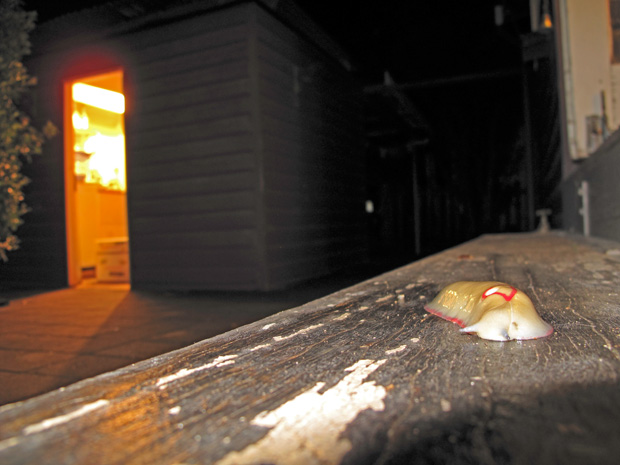
Alas, our stairs are in poor shape. Any remains of paint have been replaced by algae. Perfect, however, for a rampaging slug looking for a feast. Photo R. Ashdown.
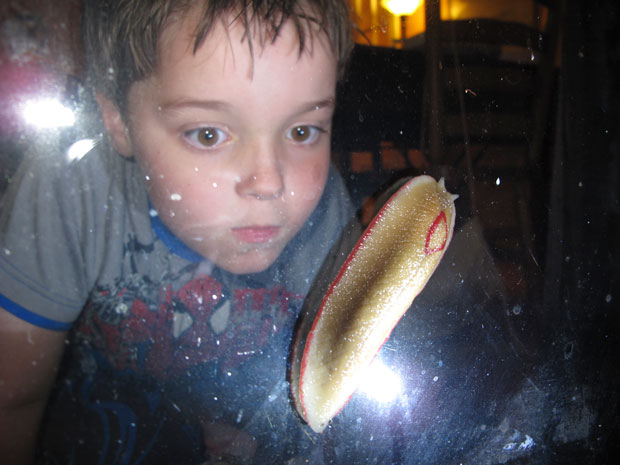
Doesn’t say much for the state of the back-door’s glass either! This slug runs amok in search of algae, or seeks a view of what the humans get up to at night. Photo R. Ashdown.
Red-triangle Slugs come in different colours. While the most common colour form is a creamy white animal with a prominent red triangular mantle shield, all-red and all-yellow animals can be found at Cunninghams Gap (south of Toowoomba). Future molecular studies may reveal that some of these colour forms are actually distinct species.
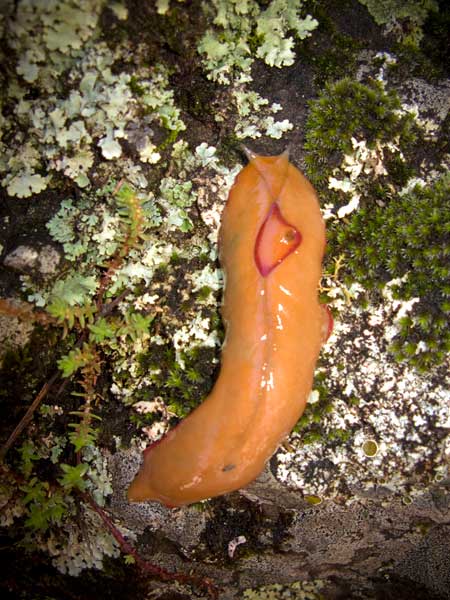
An orange form of the Red Triangle Slug, at Mt Mitchell NP, Cunninghams Gap. The hole inside the red triangle is the animal’s respiratory opening, known as a pneumostome, or breathing pore. This is a feature of all air-breathing land slugs and snails. Photo Harry Ashdown.
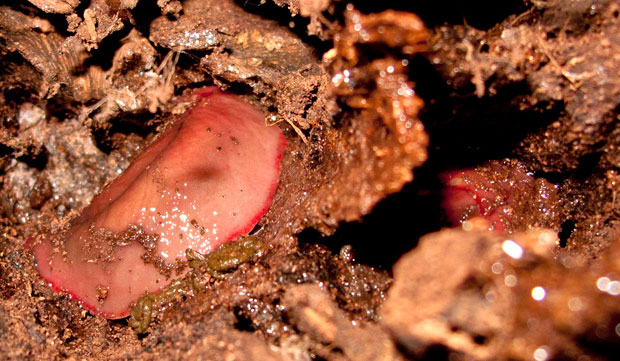
Toowoomba resident Jane alerted me to the presence of a beautiful red form of the slug in her Toowoomba backyard. Here are several curled up in a log in her great garden. Photo R. Ashdown.
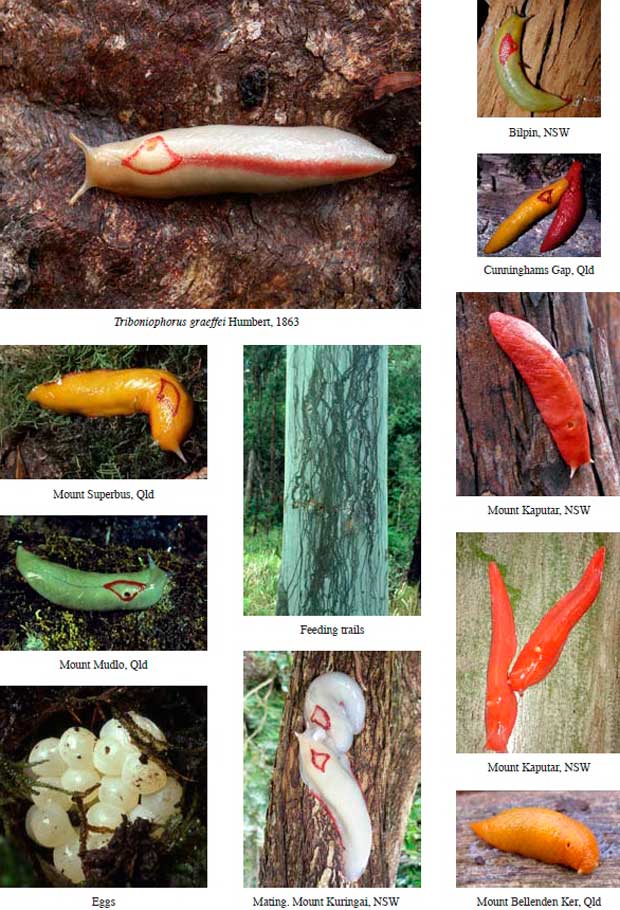
Colour variations in Red Triangle Slugs, from Australian Land Snails, Volume 1, by John Stanisic, Michael Shea, Darryl Potter and Owen Griffiths — gastropod gurus! Courtesy Darryl Potter.
If you have read this far you are probably not the kind of person who finds slugs disgusting. So, I don’t need to finish this post with a monologue about the important role native slugs and snails play in our ecosystems, as they go about recycling nutrients and offering themselves up as (sticky) food for many other critters.
I’ll just end by saying that it’s always great to see these little slow-motion beasties on wet nights, but not so great to feel them between your toes!
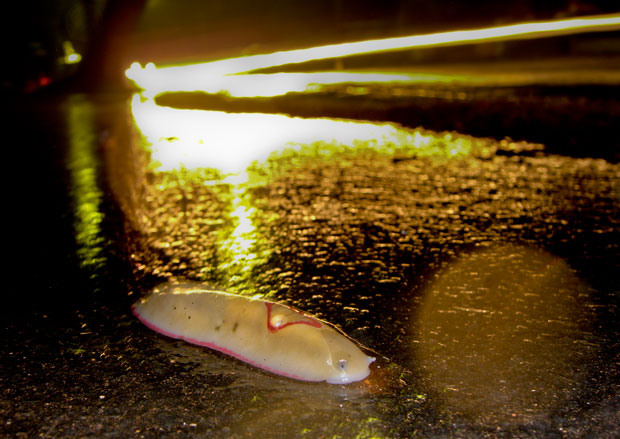
A Red Triangle Slug motors slowly along the footpath outside our place near midnight as cars swish past. A splash of colour on a drab, dark night in the ‘burbs. Photo R. Ashdown.
Slugs on the web:

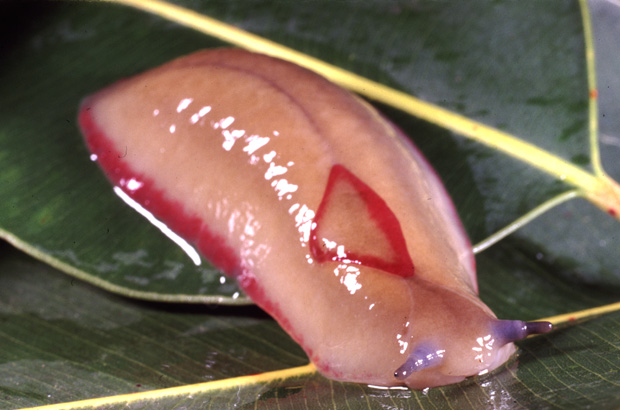
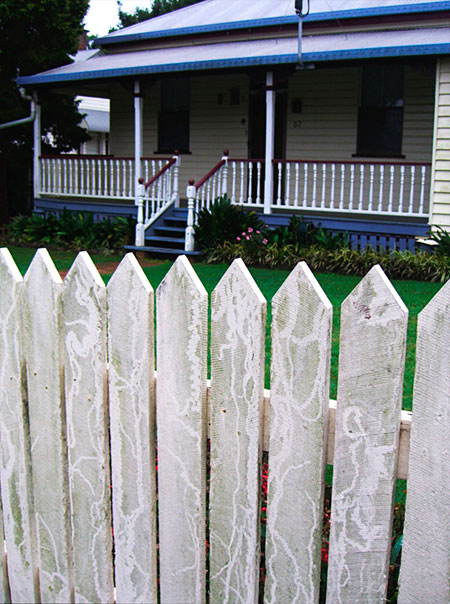
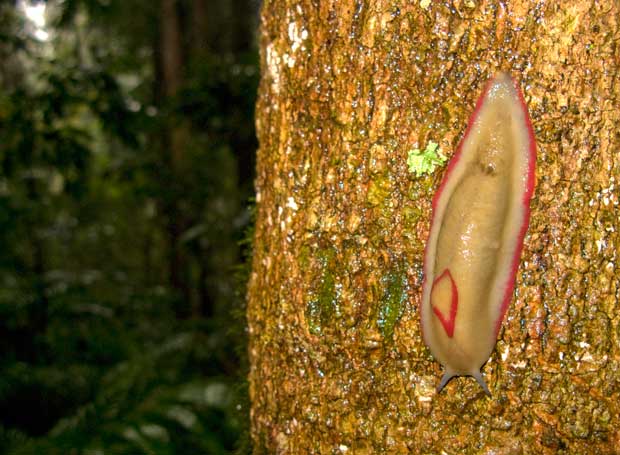
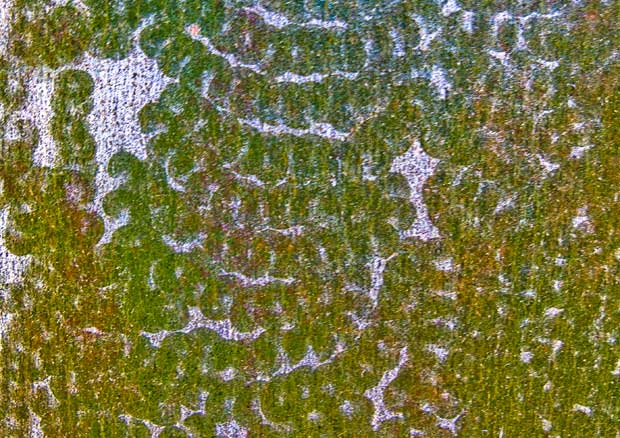
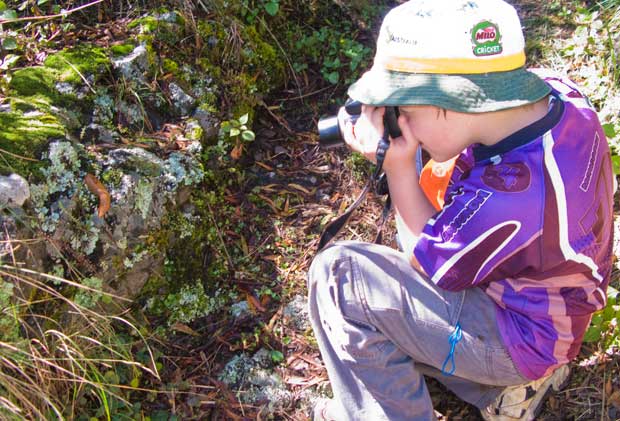
Hey Ashdown,
'dodgy online diary' or not, I can't get enough of your posts. Great photos and interesting information told in an engaging way – don't ever stop! Cheers!
hi bob. Love the piece on the slimey slugs. Can you believe we saw one going for a slow stroll along the footpath in tarragindi, brisbane recently. What a beauty!! I'd love to get me a few to deal with the bathroom mould. BTW love ya blog.
Wow… I didn't realize there were so many colour variations! I have only seen them twice and both times this year, one at Mapelton on the sunshine coast hinterland and the other in Toowoomba near picnic point. Both were the grey version.
Great post, just found a couple in our garden on the Gold Coast Hinterland and wondered what they were. We love all sorts of beasties and your post is informative and entertaining. Thanks heaps.
Thanks Deborah, glad the post was helpful. Strange critters those!Cheers, Rob
Hi Rob,
I just discovered one of these in the pergola of our place in Caboolture Q. We shined a light on it to take a closer look – and a photo – and a thick yellowish paste oozed from the side near the breathing hole, but closer to the foot. Was this waste, or something else? Did he not like the light?
Thanks for the informative post 🙂
Hi Robert
Not sure what the thick yellowish paste oozing from near the breathing hole is… do snails get colds?
Just spoke to John Stanisic… if it’s definitely Triboniophorus with a visible red triangle, then can only assume it’s a mucous discharge of some sort. Bear in mind that the introduced Limacus flavus (Yellow Cellar Slug) which occurs in Southern NSW has a distinctive sticky yellowish mucus, but not recorded from up this way.
Cheers
Darryl Potter (MEnvSc)
Biodiversity Collection Manager
(Mollusca & Crustacea)
Biodiversity & Geosciences Program
Queensland Museum & Sciencentre
po box 3300 | south brisbane bc | queensland 4101 | australia
t 07 3840 7600 | f 07 3846 1226 | darryl.potter@qm.qld.gov.au
Visit our new website: http://www.qm.qld.gov.au
Love your close “… not so great to feel them between your toes!”
Amazing pics as always … the pic of the tracks on the tree is excellent.
Michael Fox
Project Director
Pollinator Link
http://www.pollinatorlink.org
Hi Robert,
Just stumbled upon one of these guys (and your terrific website) on top of our retaining wall in Kenmore!
I used to see them a lot when I was involved in the building of the Sunshine Coast Great Walk years ago.
I’m off take a couple of photos before it slithers off into the night…
Cheers,
Chris
Hi there
I have just found a Red Triangle Slug on our glass door here in North Toowoomba
It is white and quite large…